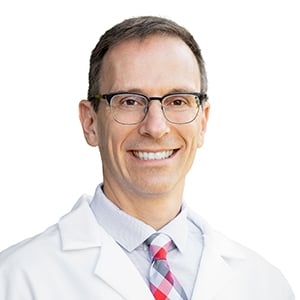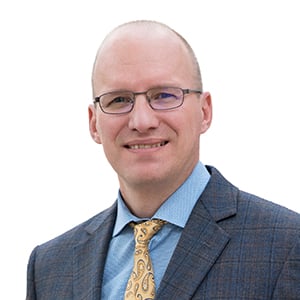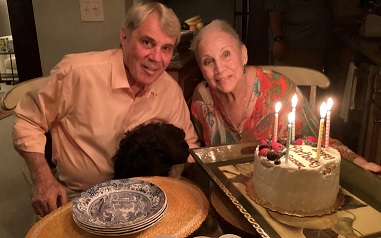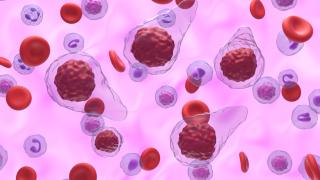“I’ve been very active all my life. I love playing tennis and walking,” says Susan Reid, 72, who lives in Santa Barbara, California, with her husband Gary. “We live right by the ocean where there are birds, waves crashing, turtles. That’s my place of letting go.”
A dramatic shift in her health a decade ago has meant Reid has had quite a bit to let go of. But assessment guidelines specifically for older adults developed by a national team of experts, including City of Hope physicians, helped her get through it all, ensuring the best outcome while managing side effects.
An Unusual Diagnosis
It all started back in 2013. Reid was riding a new bike when the chain hit her leg. Her wound would not stop bleeding, so she went to urgent care. “My doctor told me I may have polycythemia vera,” she recalled.
Polycythemia vera (PV) is a rare blood cancer in which the bone marrow manufactures too many red blood cells. These excess cells make the blood too thick, slowing its flow, which may cause serious problems like blood clots. Still, “it didn’t connect that this was cancer,” she said.
Reid sought a second opinion at City of Hope® with specialist David Snyder, M.D. “He agreed with the first physician. That was really hard,” she said.
Reid started treatment with an oral medication to keep the PV under control. For the next several years, it remained stable. But in February 2022, she started experiencing fatigue and pain. “I’d be out walking every day, and it got harder and harder.”
She returned to City of Hope, where she met Andrew Artz, M.D., M.S. Artz specializes in blood cancers in older adults.
A bone marrow biopsy showed that Reid’s PV had evolved into a rare cancer called myelofibrosis, which disrupts red blood cell production and causes bone marrow scarring. Symptoms include fatigue, itching and bone pain.

“As bone marrow damage increases, blood counts fall,” said Artz, professor in the Division of Leukemia in the Department of Hematology & Hematopoietic Cell Transplantation, director of the Aging and Blood Cancers Clinic and deputy director of outcomes in the Center for Cancer and Aging. “The goal is to prevent it from progressing to acute leukemia. Once it goes there, options are limited.”
Experts recommended a stem cell transplant. City of Hope has the largest transplant programs in the country, with nearly 19,000 stem cell and bone marrow transplant procedures performed to date. In Reid’s case, the slower pace of her disease allowed time to prepare. Artz began screening for stem cell donors.
A Team of Experts
He also brought in two colleagues: William Dale, M.D., Ph.D., the George Tsai Family Chair in Geriatric Oncology in the Department of Supportive Care Medicine, and Jeanine Moreno, M.S., APRN, AGNP-C, geriatric nurse practitioner. Both work in City of Hope’s Center for Cancer and Aging, where Dale is the director.

To improve outcomes and quality of life for older adults, Dale had helped develop the first-ever American Society of Clinical Oncology geriatric oncology guidelines in 2018. The guidelines recommend thorough assessment of physical and emotional health history before deciding on treatment.
Dale is lead author on the updated 2023 guidelines, published in the Journal of Clinical Oncology in July. These latest guidelines were based on two large, randomized trials published in The Lancet and JAMA Oncology, Dale said. The trials evaluated the use of a comprehensive questionnaire called a validated geriatric assessment (GA).
“The trials showed that using the GA with assessment-based management led to better outcomes: less toxicity, fewer medicines and better quality of life,” Dale said. “That led ASCO to say it was time for an update. The evidence is so strong now.”
The assessments are conducted through City of Hope's three OASIS (Older Adults Specialized Interdisciplinary Services) clinics at the main campus in Duarte. The OASIS program was created to offer custom care for older adults so that they and their loved ones are supported, can make informed choices and get the care that they want based on what is most important to them.
“Until recently,” Dale continued, “no one would do stem cell transplants for patients older than 70. Andy [Artz] and I said it should really be about your fitness and ability to go through it” based on individual assessment.
Dale and Moreno used the GA to help Reid prepare for her transplant.
Readying for Transplant
The transplant would involve a four-week hospital stay. Reid's nutritional needs were assessed. Exercise training was another strategy put in place. “These are things you can do in the hospital, like the stationary bike and walking. It’s important to build leg strength to be able to get up out of bed,” Artz said.
Reid had had a fall in the past, so they strategized mobility management.
The team also looked at her social support system. “If social support vanishes, it’s very stressful for the family. We plan for a backup caregiver,” said Artz.

They also worked on emotional health, because transplants can trigger mood issues. “I had a month of psychological preparation,” Reid said. “They helped my mind get into a quiet place. That was important. There were breathing exercises, and they would take my blood pressure after I practiced. It usually went down 10 points.”
Reid felt the benefits. “I went into this with absolutely no anxiety, and that is the truth.”
Before her transplant could occur, Reid had to undergo chemotherapy to destroy her cancerous bone marrow. Dale’s team used the GA to calculate her chemotherapy toxicity risk, which guided Artz in determining the optimal dose for Reid.
“Susan received an intermediate dose of chemo that a lot of centers understandably don’t give people 70 and older, because it’s very difficult,” Artz said. “And frankly, it was difficult for her.”
Reid experienced nausea, diarrhea and loss of balance. But Artz and his team anticipated and managed her side effects.
In February 2023, one day after Valentine’s Day, it was time for the stem cell transplant. The City of Hope team had prepared in other ways, too.
“They had party hats and a cake,” Reid laughed.
“The nurse was giving me the stem cells through an IV line,” she recalled. “You see this life going into your body. The cells looked like little hearts going in. I was ready.”
Recovering With Support
Three days later, she was in pain. Artz prescribed medication to manage neuropathy. Moreno adjusted Reid’s anxiety and sleep medications. Together, the strategies reduced pain, dizziness and her risk of falling.
Occupational therapists helped Reid with fatigue and mobility. “We’re big fans of assistive devices to get you back on your feet safely,” Artz said. He prescribed a walker. Reid was initially hesitant to use it, but that changed. “The walker is my best friend now,” she said. “I have stability!”
Six months out from her stem cell transplant, Reid reflected at home. Pretransplant, her pain level had been 8 or 9 out of 10. Now, it was in the 3 to 4 range, although some days are harder than others.
“Our goal is to cure myelofibrosis,” Artz said. “The fibrosis takes time to resolve. We perform a test that distinguishes donor cells from patient cells. The fewer of the patient’s cells we detect, the less likely residual myelofibrosis exists.”
Reid mused about the donor cells. “The stem cell donor was a 21-year-old female. So, I’m waiting to be 20 years younger,” she joked. “So far, the cells like me very much.”
She’s still a bit wobbly, she said, and uses the walker regularly. Meanwhile, Artz monitors her medications to prevent graft-versus-host disease and infection, which are very gradually reduced after transplant.
“My outlook has definitely changed,” Reid said. “I always thought I was so appreciative, but this is way different. Some people don’t make it to 72. I feel so fortunate because I’m here, and I’m doing really well. And it brings joy because these little stem cells are working in my bone marrow to make me better, day by day.”
The Department of Supportive Care Medicine at City of Hope was the first in the United States to fully integrate across supportive care specialties and into the patient’s clinical care and is one of the largest programs of its kind today. The program provides cancer patients with comprehensive physical, psychological, social and practical support services, including care navigation; survivorship programs; specialists in cancer and aging; child life specialists; psychological and spiritual counseling; pain management; integrative medicine, such as yoga, massage and meditation; and more — all with a focus on maximizing patient and family strengths, quality of life and the ability to best engage in their treatment journey and beyond. Thanks to a gift from The Sheri and Les Biller Family Foundation, City of Hope is working to expand this offering across its cancer care system and to advocate for establishing supportive care as a standard best practice for cancer care in the United States.
Main image: An illustration of myelofibrosis.
